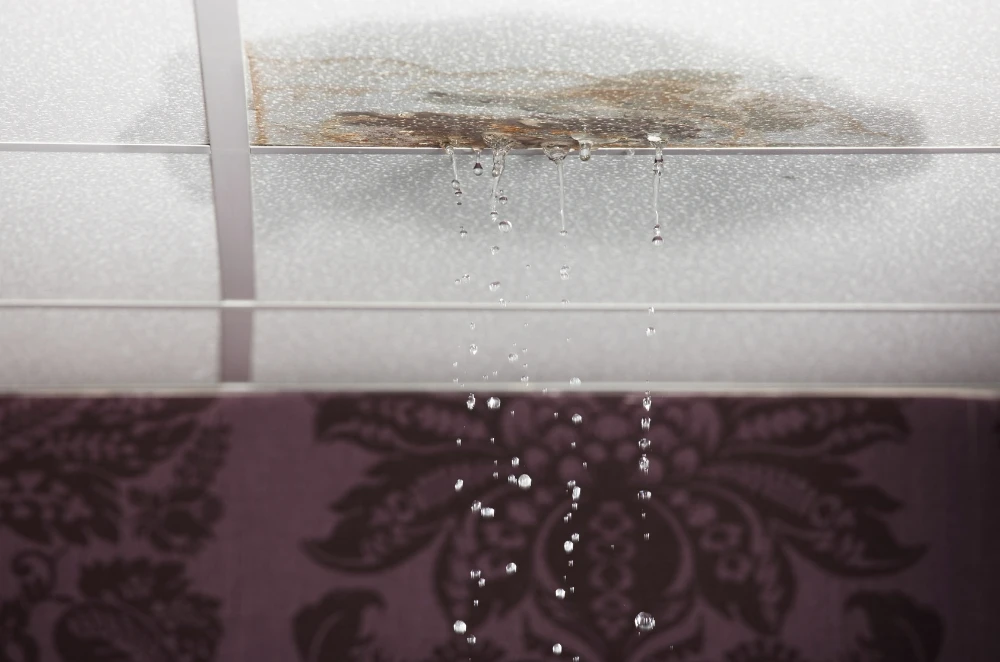You know that old saying—“She’ll be right”? That might work for a dodgy fence post or a squeaky door, but when it comes to your roof? Nah, she won’t. A roof leak doesn’t just go away. It starts small—maybe a faint stain or a musty whiff—and before you know it, you’re staring up at a sagging ceiling wondering why it smells like wet socks. That’s why even early signs should have you thinking about leaking roof repairs, long before the damage becomes visible—or expensive.
This happened to me last winter. Thought I’d just let it ride. "Bit of discolouration,” I said, “probably nothing." Two weeks and one storm later, the ceiling gave way. Buckled like an old deck chair. Took half the linen cupboard with it.
So, how do you know when that “small issue” is actually screaming for attention? Here are five signs your roof’s in strife—and why you shouldn’t wait to sort it.
Water stains that spread like gossip
You know those weird brown patches that appear on your ceiling out of nowhere? Like coffee rings that just keep getting bigger? That’s not your roof sweating. That’s water getting in—probably for longer than you think.
A couple I worked with in the Inner West noticed a mark above their hallway. Thought it was from an old leak. We opened it up—mould, soaked insulation, and a slow drip that had rusted out a nail plate. It wasn’t new. It was just the first time the ceiling decided to show it.
So, if you spot a faint stain, don’t play the waiting game. That’s your early warning system, right there. It usually means moisture’s been making itself at home for a while.
That damp, sour smell? Not just the dog.
Sometimes you don’t see the leak—you smell it.
Musty. Dank. Like wet cardboard shoved in a cupboard. That smell is mould doing its thing in dark, humid corners of your roof cavity. And trust me, by the time your nose picks up on it, it’s already thriving.
I had a bloke in Ryde ring me up about a mildew smell in his upstairs room. He thought it was coming from the ensuite. Turns out, the leak was on the other side of the roof. Water had travelled along the rafters, soaking the insulation, and pooled in the ceiling void. Took us hours to find the actual source.
If there’s one thing you don’t want breeding above your head, it’s mould. According to the NSW Government’s roof water damage guide, mould and damp are priority checks after any major storm. Good advice—storm or no storm.
Broken tiles or dodgy flashing
Here’s something easy to spot—if you’re game to get up a ladder. (Or better yet, don’t. Use binoculars or a drone if you’ve got one.)
Take a look at the top of your house. Anything look off? Tiles out of place? Rust around vents? Cracks near the ridge line? These are classic weak spots.
What most people don’t realise is how fragile roof flashing can be. One loose piece, and you’ve got a perfect funnel for rainwater. Happens all the time, especially in older homes or after a bit of hail.
In fact, cracked flashing was behind the leak that wrecked my ceiling. All it took was a gusty arvo and a few heavy showers—and boom, water pouring in behind the cornice.
Paint starting to bubble or peel? Uh-oh.
This one caught me by surprise. I had no idea roof leaks could mess with your paint—until I saw my hallway wall blistering like a bad sunburn.
When paint starts to bubble or flake, it’s not always bad prep work. It’s usually a moisture issue. The water gets trapped behind the wall, pushes the paint out, and suddenly you’ve got a flaky mess that no amount of sanding will fix.
Keep an eye out for:
- Paint that feels soft or squishy
- Thin cracks are spreading upwards
- Yellowing around corners
Thing is, water doesn’t always drip straight down. It finds the path of least resistance. One leak on the left side of the house can show up in your bedroom ceiling two rooms over.
If you’ve seen any of this, it’s worth digging into the signs of a leaking ceiling. Catching it now could save your Gyprock and your budget.
Ceiling looks like it’s sagging? That’s not a good sign.
If your ceiling’s starting to dip, curve, or look like it’s holding weight, get it checked immediately. This is one of the last signs before something serious gives way.
I saw one last year after the big summer rain—family in Ashfield had a slow leak they didn’t notice. Walked in after work to find the kitchen ceiling had caved in. Waterlogged plasterboard, ruined cabinetry, and a very soggy dog bed underneath.
Look for:
- Soft spots near light fittings
- Bowing between ceiling joists
- Dull thuds when you knock on it
By the time you’ve got sag, the water’s already been there a while. Don’t mess around. Call a pro and get it opened up.
Why acting fast actually saves money
Here’s the rub—most people wait too long. I get it. We’re all busy, and roof leaks feel like “future problems.” But future-you is going to be furious when those “few drops” turn into a $7,000 ceiling replacement.
A leak caught early? It might just need:
- Tile resealing
- Flashing repair
- Gutter clearance
- Small patch job
Leave it, though, and you’ll be dealing with insulation replacement, internal framing rot, or full ceiling rebuilds.
Even if you’re handy, leaks aren’t the job to DIY. Too many hidden risks—live wires, black mould, unseen water trails. Trust me, it’s not worth it.
Not sure where to start? Here’s what to do.
If you suspect something’s wrong, don’t panic. Just move quickly and methodically.
- Take photos (before touching anything)
- Switch off the power in any wet zones
- Cover the area if more rain is forecast
- Call a licensed roofer to inspect
- Lodge a claim if the damage is significant
And moving forward, make regular checks a habit. I do mine every spring. It takes 20 minutes and a camera. You can even use a roof inspection checklist to keep yourself on track.

Wrap-up: Leaks are quiet—until they’re not
Roofs don’t just fail overnight. They whisper first through smells, stains, subtle warps. The trick is catching them before they start shouting.
And look, I’ve been there. It’s easy to ignore. Easy to delay. But a little bit of water now becomes a whole lot of damage later.
If your roof’s dropping hints, don’t brush them off. Listen. Check. Act.
You’ll thank yourself the next time the rain rolls in.



